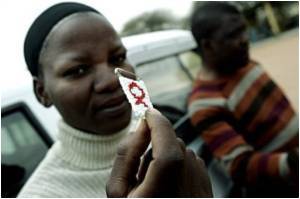HIV and physical injuries are global health concerns. Patients suffering from these injuries have a higher prevalence of HIV in low & middle-income countries.

‘Patients with HIV-seropositive are at an increased risk of mortality than patients with HIV-seronegative.’





Although both HIV and injuries are global health concerns, literature evaluating their intersection, co-occurrence and associated impact in LMIC populations is not extensively detailed. This systematic review and meta-analysis assesses the literature pertaining to the prevalence of HIV-seropositivity and its association with all-cause mortality among patients seeking care for physical injuries in LMICs. The data demonstrate that a disproportionate proportion of injured patients in LMIC settings are HIV-seropositive compared to geographic and temporally matched prevalence estimates, and that these patients may have an increased risk of death, compared to HIV-seronegative patients following injuries.
The analysis incorporates data from 3,994 injured patients with assessed HIV status in LMICs. All of the studies included in the review were from sub-Saharan Africa, where 70% of the world's HIV positive population lives.
Compared to temporally matched national estimates, every study showed greater HIV seroprevalence among injured patients. Pooled reports from injured patients in South Africa, for example, showed a three-fold greater prevalence of HIV-seropositivity than the documented national prevalence.
Mortality data were available for 1,398 patients and was derived from seven studies from five countries in sub-Saharan Africa.
Advertisement
The underlying cause for the observed increased HIV prevalence among the injured is not known based on the available literature. However, the reasons are likely multifactorial and mitigated by interacting social domains and host factors such as the presences of high-risk sexual and substance use behaviors and the co-occurrence of intimate partner violence and mental illness in the HIV infected population.
Advertisement
Taking into account the relative increased HIV prevalence demonstrated in the existing body of data, and the fact that injuries most commonly occur in young adults, a population that is difficult to access for HIV services, and who have been shown to have poorer HIV associated outcomes, opportunities to develop integrated HIV engagement strategies in injury care settings may exist.
Importantly, such initiatives align with global recommendations, as they would augment progress towards the WHO 90-90-90 HIV targets for testing and treatment and specifically help access the identified key population of neglected young adults in LMICs.
Given the poorer morality outcomes among HIV-seropositive patients from LMICs, potential benefits to injury outcomes may also be gained.
In conjunction with such programs, concurrent research to better evaluate the prevalence of HIV and its impact on outcomes after injury from broader healthcare delivery and geographic settings will be cruical to inform the development of approaches for horizontally integrated HIV-injury public health policies and care practices.
Source-Eurekalert









